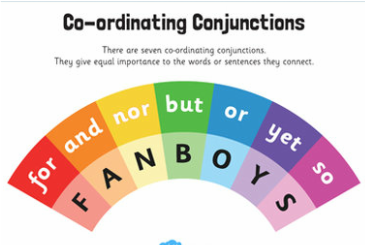Corordinating conjunctions |
Subordinating conjunctions |
|
In English, the mnemonic acronym FANBOYS can be used to remember the coordinators for, and, nor, but, or, yet, and so. There are a few more, but these are the most common ones
|
Subordinating conjunctions, (also called subordinators), are conjunctions that join an independent clause and a dependent clause, and also introduce adverb clauses. The most common subordinating conjunctions in the English language include:
|
|
|
|
